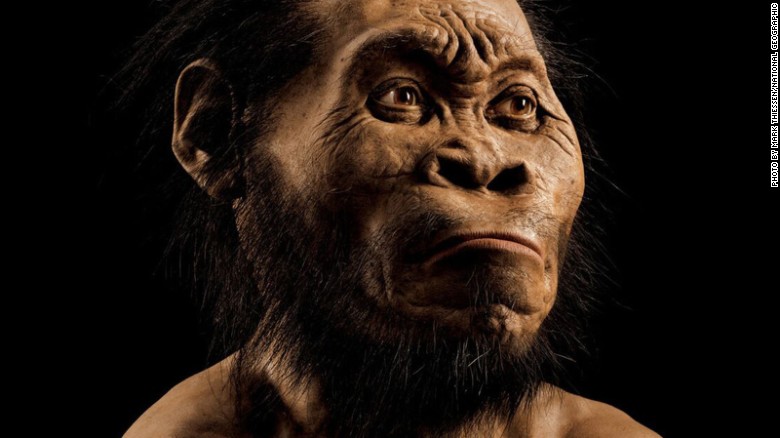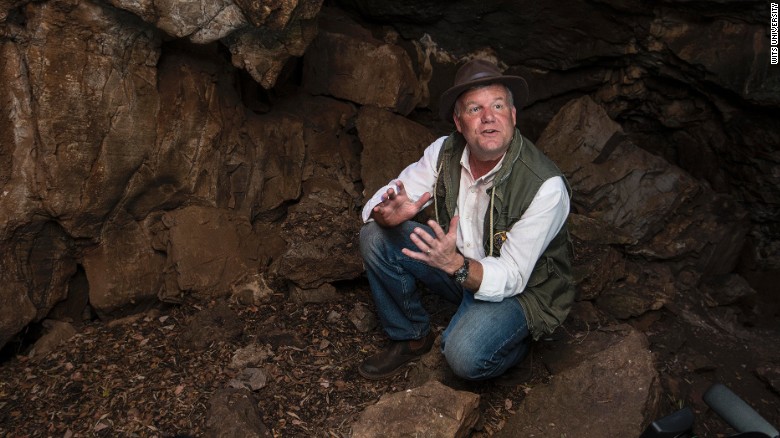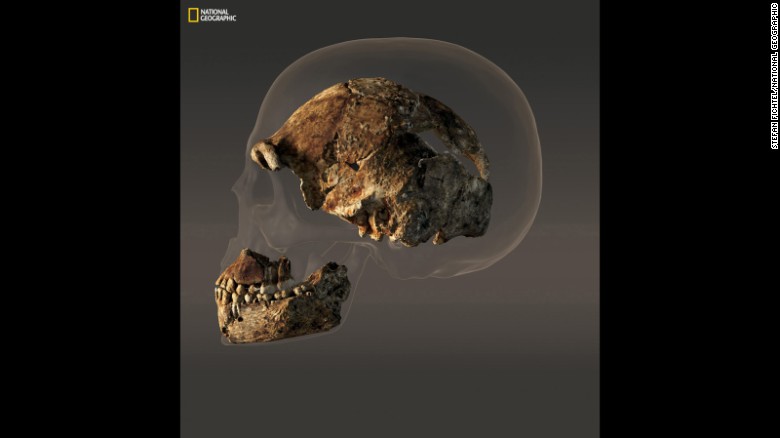- WICKNELL CHIVAYO left school at 15
- DISGRUNTLED Zimbabwe police stage uniform protest.
- MNANGAGWA wife Auxillia drops charges against nine women who boed her in Manicaland
- O.J. Simpson dies of cancer , aged 76.
- South Africa ANC is the cause of ZIMBABWE troubles claims Zimbabwe opposition politician Job Sikhala
New Human Species (HOMO NALEDI) Discovered In Cradle of Humanity World Heritage Site, ‘SA’

Two years after they were tipped off by cavers plumbing the depths of the limestone tunnels in the Rising Star Cave outside Johannesburg, Berger and his team have discovered what they say is a new addition to our family tree.
The team is calling this new species of human relative “Homo naledi,” and they say it appears to have buried its dead — a behavior scientists previously thought was limited to humans.
Berger’s team came up with the startling theory just days after reaching the place where the fossils — consisting of infants, children, adults and elderly individuals — were found, in a previously isolated chamber within the cave.
The team believes that the chamber, located 30 meters underground in the Cradle of Humanity world heritage site, was a burial ground — and that Homo naledi could have used fire to light the way.
“There is no damage from predators, there is no sign of a catastrophe. We had to come to the inevitable conclusion that Homo naledi, a non-human species of hominid, was deliberately disposing of its dead in that dark chamber. Why, we don’t know,” Berger told CNN.
“Until the moment of discovery of ‘naledi,’ I would have probably said to you that it was our defining character. The idea of burial of the dead or ritualized body disposal is something utterly uniquely human.”
Standing at the entrance to the cave this week, Berger said: “We have just encountered another species that perhaps thought about its own mortality, and went to great risk and effort to dispose of its dead in a deep, remote, chamber right behind us.”
“It absolutely questions what makes us human. And I don’t think we know anymore what does.”
The first undisputed human burial dates to some 100,000 years ago, but because Berger’s team hasn’t yet been able to date naledi’s fossils, they aren’t clear how significant their theory is.
Berger tried to put the new find into perspective.
“This is like opening up Tutankhamen’s tomb,” he said. “It is that extreme and perhaps that influential in this stage of our history.”
Almost human but not quite
Homo naledi is a strange mosaic of the ancient and the thoroughly modern.
Naledi’s brain was no bigger than an orange, scientists say. Its hands are superficially human-like, but the finger bones are locked into a curve — a trait that suggests climbing and tool-using capabilities.
Homo naledi was relatively big: it stood about 5 feet tall, had long legs, and its feet are almost identical to ours, suggesting it had the ability to walk long distances.
“Overall, Homo naledi looks like one of the most primitive members of our genus, but it also has some surprisingly human-like features, enough to warrant placing it in the genus Homo,” says John Hawks of the University of Wisconsin-Madison, a senior author on the papers describing the new species that were published Thursday.
The scientists can make these claims, in part, because of the sheer scale of the find.
In the vault at the University of Witwatersrand, hundreds of priceless specimens lie in padded cases across the room.
So far they’ve unearthed more than 1,500 fossil remains in total — the largest single hominin find yet revealed on the continent of Africa, the cradle of human evolution.
Underground astronauts
Gathering the fossils was dangerous work.
Berger, a National Geographic Explorer-in-Residence, was already well-known for his discovery of “Australopithecus sediba,” another species of human ancestor, in 2008. But this expedition would face unique challenges.
The fossils were found at the end of a series of chambers and tight squeezes deep underground, some 90 meters (100 yards) from the cave entrance. To get there, scientists would have to squeeze through a 7-inch wide cave opening.
- Scientists say they have discovered a new species of human relative in South Africa
- “Homo naledi” appears to have buried its dead — a behavior previously though limited to humans
- The discovery could transform our understanding of human evolution
Rising Star Cave, South Africa (CNN)When an amateur caver and university geologist arrived at Lee Berger’s house one night in late 2013 with a fragment of a fossil jawbone in hand, they broke out the beers and calledNational Geographic.
Berger, a professor at the University of the Witwatersrandin Johannesburg, South Africa, had unearthed some major finds before. But he knew he had something big on his hands.
What he didn’t know at the time is that it would shake up our understanding of the progress of human evolution and even pose new questions about our identity.
Two years after they were tipped off by cavers plumbing the depths of the limestone tunnels in the Rising Star Cave outside Johannesburg, Berger and his team have discovered what they say is a new addition to our family tree.
The team is calling this new species of human relative “Homo naledi,” and they say it appears to have buried its dead — a behavior scientists previously thought was limited to humans.
Berger’s team came up with the startling theory just days after reaching the place where the fossils — consisting of infants, children, adults and elderly individuals — were found, in a previously isolated chamber within the cave.
The team believes that the chamber, located 30 meters underground in the Cradle of Humanity world heritage site, was a burial ground — and that Homo naledi could have used fire to light the way. 12 photos: Meet Homo naledi
“Until the moment of discovery of ‘naledi,’ I would have probably said to you that it was our defining character. The idea of burial of the dead or ritualized body disposal is something utterly uniquely human.”
Standing at the entrance to the cave this week, Berger said: “We have just encountered another species that perhaps thought about its own mortality, and went to great risk and effort to dispose of its dead in a deep, remote, chamber right behind us.”
“It absolutely questions what makes us human. And I don’t think we know anymore what does.”
The first undisputed human burial dates to some 100,000 years ago, but because Berger’s team hasn’t yet been able to date naledi’s fossils, they aren’t clear how significant their theory is.
Berger tried to put the new find into perspective.
“This is like opening up Tutankhamen’s tomb,” he said. “It is that extreme and perhaps that influential in this stage of our history.”
Almost human but not quite
Homo naledi is a strange mosaic of the ancient and the thoroughly modern.
Naledi’s brain was no bigger than an orange, scientists say. Its hands are superficially human-like, but the finger bones are locked into a curve — a trait that suggests climbing and tool-using capabilities.
Homo naledi was relatively big: it stood about 5 feet tall, had long legs, and its feet are almost identical to ours, suggesting it had the ability to walk long distances.
“Overall, Homo naledi looks like one of the most primitive members of our genus, but it also has some surprisingly human-like features, enough to warrant placing it in the genus Homo,” says John Hawks of the University of Wisconsin-Madison, a senior author on the papers describing the new species that were published Thursday.
The scientists can make these claims, in part, because of the sheer scale of the find.
In the vault at the University of Witwatersrand, hundreds of priceless specimens lie in padded cases across the room.
So far they’ve unearthed more than 1,500 fossil remains in total — the largest single hominin find yet revealed on the continent of Africa, the cradle of human evolution.
Underground astronauts
Gathering the fossils was dangerous work.
Berger, a National Geographic Explorer-in-Residence, was already well-known for his discovery of “Australopithecus sediba,” another species of human ancestor, in 2008. But this expedition would face unique challenges.
The fossils were found at the end of a series of chambers and tight squeezes deep underground, some 90 meters (100 yards) from the cave entrance. To get there, scientists would have to squeeze through a 7-inch wide cave opening.
Within days Berger had dozens of responses, and he eventually selected a team of six “underground astronauts” — all women — to do the job.
Berger himself could not reach the chamber where the remains lay, but he followed all of the exploration on real-time monitors above ground and communicated with his team.
“It is the heart of exploration. What we are privileged enough to do is going into the next new unexplored spaces,” says Berger. By David Mckenzie and Hamilton Wende, CNN
see more at www.newzimbabwevision.com

